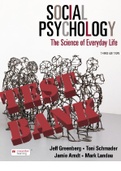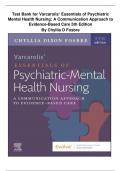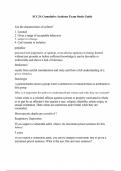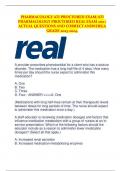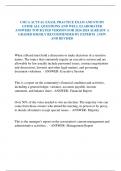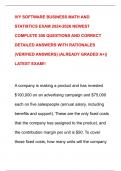Exam (elaborations)
Social Psychology: The Science of Everyday Life 3rd Edition by Greenberg, Schmader, Arndt and Landau - All Chapters 1-15 | TEST BANK
TEST BANK for Social Psychology: The Science of Everyday Life 3rd Edition by Jeff Greenberg, Toni Schmader, Jamie Arndt and Mark Landau. ISBN-13 978-8. All Chapters 1-15. TABLE OF CONTENTS Chapter 1 The Revealing Science of Social Psychology Chapter 2 Fundamentals of Social Behavior Chapter 3 The ...
[Show more]
